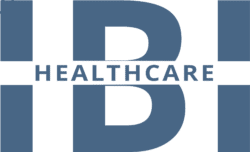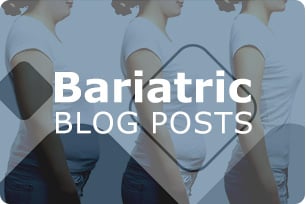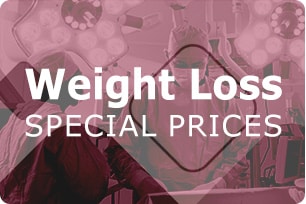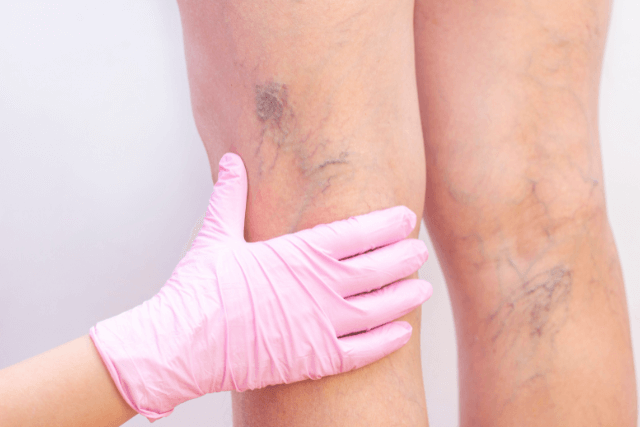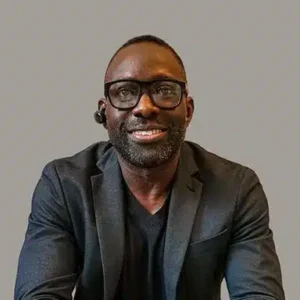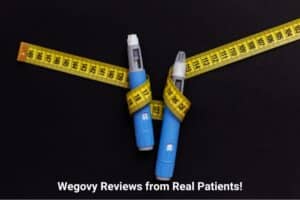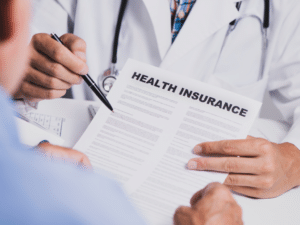What Causes Varicose Veins? Understanding the Basics
Varicose veins affect millions worldwide, yet many still wonder: What causes varicose veins? Simply put, varicose veins develop when veins become enlarged, twisted, and overfilled with blood. This often results from weakened vein walls and faulty valves inside the veins, which allow blood to flow backward and pool. As a result, veins appear swollen and bulging, most commonly in the legs.
To understand this better, it helps to know how veins normally work. Veins carry blood back to the heart. One-way valves inside them keep blood flowing upward against gravity. However, when these valves fail, blood collects and causes veins to stretch. Consequently, varicose veins form.
Varicose Veins Causes: Key Factors
Many factors contribute to the development of varicose veins. Let’s explore the most common causes.
1. Valve Malfunction in Veins
The primary cause of varicose veins is the failure of vein valves. These valves prevent blood from flowing backward. When they weaken or get damaged, blood pools in the vein, increasing pressure and stretching the vein walls. Over time, this causes visible varicose veins.
2. Genetics and Family History
Often, varicose veins run in families. If your parents or close relatives have varicose veins, you are more likely to develop them too. Genetic factors can affect the strength of vein walls and valve function.
3. Age-Related Changes
As you age, veins lose elasticity. Vein walls can become weaker, and valves may not work as effectively. Therefore, age is a significant risk factor for varicose veins.
4. Gender and Hormonal Influences
Women are more prone to varicose veins than men. Hormonal changes during puberty, pregnancy, and menopause can relax vein walls. Additionally, the use of birth control pills or hormone replacement therapy may increase the risk.
5. Pregnancy
Pregnancy increases blood volume to support the baby, putting more pressure on veins. Hormonal changes during pregnancy also relax vein walls. Both factors can cause or worsen varicose veins, especially in the legs.
6. Obesity and Excess Weight
Carrying extra weight puts additional pressure on leg veins, which can therefore lead to varicose veins. The increased pressure can damage valves and vein walls over time.
7. Prolonged Standing or Sitting
Jobs or habits that involve standing or sitting for long hours reduce blood circulation. When muscles do not contract regularly, blood flow slows, increasing the risk of varicose veins.
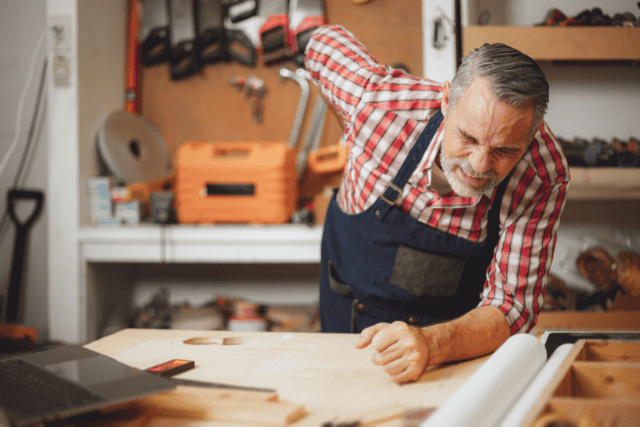
Risk Factors Varicose Veins: Who Is Most at Risk?
Now that you know the causes, it’s important to identify who faces the highest risk. These risk factors help explain why some people develop varicose veins while others don’t.
- Age: People over 50 are more likely to have varicose veins.
- Gender: Women have a higher risk due to hormones and pregnancy.
- Family history: Genetics plays a big role.
- Obesity: Extra weight stresses veins.
- Pregnancy: Hormonal and blood volume changes affect veins.
- Occupation: Jobs requiring long standing or sitting.
- Lack of movement: Sedentary lifestyle slows circulation.
Understanding these risk factors is crucial for prevention and early detection.
Symptoms Varicose Veins: What to Look For
Recognizing varicose veins early can help you seek treatment sooner; certainly, common symptoms include:
- Visible, swollen, twisted veins, usually blue or dark purple
- Aching, heavy feeling in the legs
- Burning, throbbing, muscle cramping in lower legs
- Swelling in the feet and ankles
- Itching around the affected veins
- Skin discoloration near the varicose veins
- In severe cases, ulcers or sores near the ankles
If you notice these symptoms, it is advisable to consult a healthcare professional for evaluation.
Varicose Veins Prevention: Tips to Reduce Your Risk
While some causes like genetics and age are unavoidable, many prevention strategies can reduce your risk or slow varicose veins from worsening.
1. Exercise Regularly
Exercise improves blood flow and strengthens leg muscles, thus helping veins push blood back to the heart efficiently. Walking, swimming, and cycling are excellent choices.
2. Maintain a Healthy Weight
Keeping your weight in check reduces pressure on leg veins; moreover, a balanced diet combined with regular exercise can help.
3. Avoid Prolonged Sitting or Standing
Try to change your position frequently. If your job requires standing or sitting for long periods, take breaks to walk around or stretch your legs.
4. Elevate Your Legs
Whenever possible, raise your legs above heart level to encourage blood flow and reduce pressure in veins.
5. Wear Compression Stockings
Compression stockings help veins and leg muscles move blood more effectively. They are especially helpful if you are at higher risk or already have mild varicose veins.
6. Avoid Tight Clothing
Tight clothes can restrict blood flow; therefore, opt for loose-fitting clothing that allows your blood to circulate freely.
7. Limit High Heels
Wearing low-heeled shoes, therefore, strengthens calf muscles, which help pump blood through veins.
Treatment: The Venefit™ Procedure for Varicose Veins
For many patients, lifestyle changes and prevention are not enough to manage varicose veins. Fortunately, modern treatments such as the Venefit™ procedure offer a safe, effective, and minimally invasive option.
What is the Venefit™ Procedure?
The Venefit™ procedure uses radiofrequency energy to close off damaged veins. It is a non-surgical treatment that specifically targets the faulty veins causing varicose veins, therefore eliminating the need for large incisions or long recovery times.
How Does It Work?
During the procedure, a thin catheter is inserted into the affected vein. Radiofrequency energy heats the vein wall, thus causing it to collapse and seal shut. Blood is naturally redirected to healthier veins. Over time, the treated vein fades and disappears.
Benefits of the Venefit™ Procedure
Not only does the Venefit™ procedure treat varicose veins effectively, but it also:
- Improves the skin’s appearance by eliminating unsightly veins.
- Reduces pain, heaviness, and swelling associated with varicose veins, and also helps improve skin appearance.
- Lowers the risk of complications like ulcers or blood clots
- Requires only local anesthesia and little downtime
- Allows patients to resume normal activities quickly
Because it is minimally invasive, most patients experience little discomfort and rapid recovery compared to traditional surgery.
Why Early Treatment Matters
Ignoring varicose veins can lead to worsening symptoms and health risks. These include skin ulcers, bleeding, and in rare cases, blood clots. Therefore, understanding what causes varicose veins and seeking timely treatment, such as the Venefit™ procedure, can improve both your health and quality of life.
Summary: What Causes Varicose Veins? Key Points to Remember
- Varicose veins result from faulty vein valves and weak vein walls.
- Genetics, age, pregnancy, obesity, and prolonged standing increase risk.
- Symptoms include visible bulging veins, leg pain, swelling, and skin changes.
- Prevention focuses on exercise, weight control, as well as avoiding long sitting/standing, and compression stockings.
- The Venefit™ procedure offers a modern, effective, and minimally invasive treatment option.
By understanding what causes varicose veins, recognizing symptoms early, and therefore applying prevention tips or treatments, you can keep your veins healthy and pain-free.
